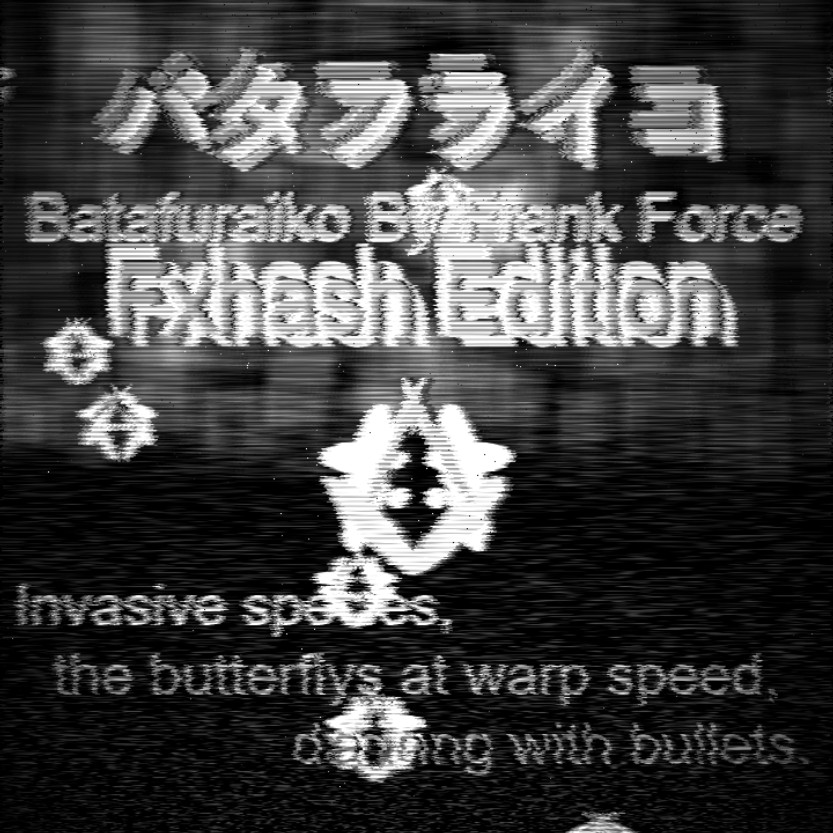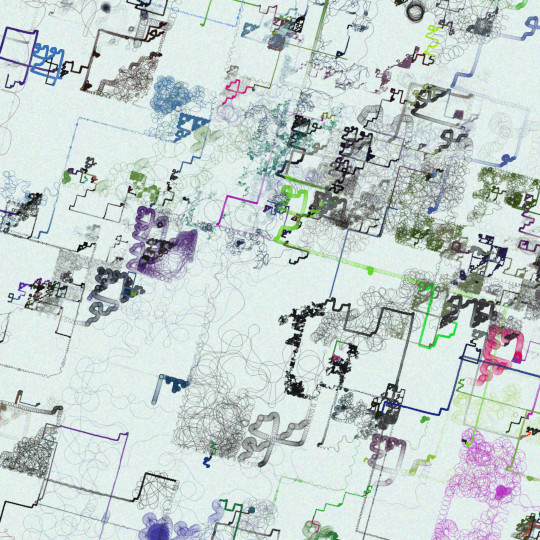In January 2022 I had a chat with Gather, it was the first intervew I had about my generative art. You can read directly it on the gather.org site, but I also have syndicated it for you here.

Who are you?
I’m Frank Force, aka KilledByAPixel, a generative artist and game developer in Austin Texas.
Why do you create things?
I see things in the world around me and feel an urge to replicate them. Sometimes by drawing or just by thinking, but my favorite way is with code. I like to see how simple I can make the code without it losing meaning.
Keep reading for my full interview with gather…
When did you start making art?
I have been making art since a young age. Before learning to program I wanted to be a traditional artist.
As I became older and better at programming, my interest shifted to making art in the form of video games. I pursued that passion for about 20 years by making major contributions to some popular games and still continue to make and release indie games.
In 2004 my interest in traditional art was renewed when I was inspired by Kandinsky and other abstract artists. Since then I have filed many sketchbooks with both abstract and realistic drawings.
When did you start making generative art?
From as early as I learned to program in the 90s I’ve made games and visual programs, though so much from that era is lost. While attending university in the 90s, I was interested in the demo scene and made a few programs that would now be called generative art.

About 3 years ago, I quit my full time games industry job to focus on becoming a better artist. That quickly led me to learn JavaScript and start creating generative art.
To give you a specific date, 3/31/2019 is when the JS1k contest ended. I submitted 6 1k programs, several have generative aspects. I want to highlight one of those programs because it may make much more sense in light of this interview and fxhash. (Warning, it’s a bit loud)
This first build of ZzFX generates unique sound seed cards. Each card has a unique look and sound based on the seed/number on the card. You can click the ZzFX logo to enter whatever number you want and it will sound the same for everyone else.
ZzFX has been open sourced and had many improvements over the years including a super tiny music format, ZzFXM. It has been used for many projects by myself and others and I still plan to use it for all my stuff.
Batafuraiko is one of my favorite things on FxHash. The generative arcade space shooter is so much fun to play and seeing all the different variations of the game is magical. How did this piece come to be?
Thank you! A procedural videogame is something I’ve been wanting to explore for a long time but never really had an outlet for.
Batafuraiko started life as my contest entry for js1024 which I won first place. Though that version was much simpler, had no audio and was the same every time. Much of the design of Batafuraiko was inspired by the lack of space I had to fit the 1k build.
After winning I also released basically that same game as an NFT on HEN long ago as a fundraiser for the Js1024k contest. I sold 100 editions for only .1 Tez each and pitched in the rest myself to donate 100 dollars to the contest.
For fxhash I wanted to release a fully generative game, and this seemed like the perfect starting point to build around. So I spent about a week improving and juicing this little game, trying my best to keep it as simple as possible.
I wanted the game to be easy to jump in and play, with no complex controls, nothing to learn, not much to lose because I know that people are not coming to fxhash to experience a video game.
I also added all the generative aspects, audio, and post processing. I’m especially happy with the TV shader that has some unique effects like the static ghosting I would see on our old TV in the 90s.
Is there any specific Batafuraiko mint that came out your favorite?
I am partial to the black and white ones because I still remember using computers with monochrome monitors. I also have an Atari 2600 with a B/W switch that I was inspired by. So, if I had to pick a favorite, is would be Batafuraiko #58

In addition to being B/W, this one also has the nebula feature and just generally has a creepy dystopian vibe.
How do you accomplish generative audio like in Batafuraiko and Zspritez?
I used ZzFX the generative sound synth I mentioned earlier. The latest version has 20 controllable parameters and has seen major updates though it is still under 1k of code. You can play around with it here.
To make generative audio without it being totally random I can create sound effects and randomize a subset of those parameters by different amounts.
Which of your FxHash pieces are you most happy with?
I always feel like the most recent one is the best, but looking back I still really like Infrastructures. It was one of my earliest and simplest pieces yet I can’t look away after having seen it a thousand times.

What do you have planned for 2022?
My goal is to release a new piece each week, pushing myself to make each one better. Right now I am working on my next 2 big pieces. One is a study on ancient calligraphy and asemic writing. The other is a play on newspaper printing and space photography.
I can’t give away too much but I will make another game and revisit the Infrastructures algorithm at some point.
Is there anybody you want to shout-out?
I love the website www.dwitter.net, it’s a small community where we post tiny javascript generative art programs. There are some incredible artists there, here are three that inspired me…
- pavel – https://www.dwitter.net/u/pavel/top
- tomxor – https://www.dwitter.net/u/tomxor/top
- jylikangas – https://www.dwitter.net/u/jylikangas/top
Anything else?
I just created a new artist profile site for myself and I’d love to share because it’s not just a website, it’s a generative operating system!
This is one of my most ambitious projects pulling together my best stuff from the past 3 years. It works somewhat on mobile but for best results I recommend Chrome in Windows 10.
Thanks for the interview!






